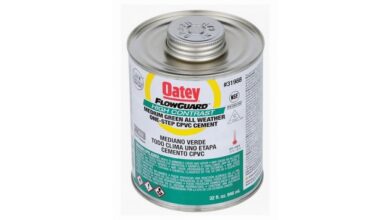Rethinking Water for Future Generations: New initiative focuses on replacing legacy toilets in drought-challenged states
Kerry Stackpole

The challenge to deliver safe, clean water for future generations can seem intimidating. Plumbing Manufacturers International’s new Rethink Water initiative starts with a relatively simple first step: replacing legacy toilets with more efficient models to gain significant water savings.
While not a new idea, product replacement programs work. They need to be scaled up into statewide or regional programs to deliver the results many drought-ridden states, such as California, require.
Part of the challenge is to get policymakers and allies comfortable with thinking bigger about bold solutions. PMI’s leadership, staff and members are working together to persuade legislators and potential partners about the urgency of rethinking water.
The Environmental Protection Agency’s WaterSense program, started in 2006, has saved 6.4 trillion gallons of water across the nation, according to the program’s latest accomplishments report.
A PMI-commissioned 2022 GMP Research study illustrated the program’s potential to deliver critical water savings for California. The study found that only 23% of California residences have toilets meeting WaterSense standards. WaterSense-labeled plumbing fixtures use at least 20% less water than those meeting federal standards.
PMI estimates that California – overwhelmed by more than a decade of drought – could save up to 326 billion gallons of water over 30 years by replacing 26.1 million inefficient toilets with WaterSense models. By accelerating replacement of these toilets, 65.3 billion gallons of water can be saved within five years.
Many cities in California and elsewhere have had excellent water-saving results with toilet replacement and rebate programs. The Santa Clarita Valley Water Agency reported to the EPA that it installed and rebated 5,157 WaterSense 1.0 gallons-per-flush toilets, installed 3,262 WaterSense showerheads with a flow rate of 1.75 gallons per minute, repaired 200 toilet leaks and made irrigation and other adjustments. Savings achieved between summer 2019 and fall 2022 totaled 214 million gallons of water – equivalent to 140 Olympic-sized swimming pools, according to the EPA.
San Antonio, Texas, sponsored a decade-long free toilet replacement program that left virtually no inefficient toilets to replace. Other successful rebate and free toilet replacement programs have been implemented across the United States.
Getting policymakers to think bigger
Because states set water-efficiency standards, PMI plans to start advocating state-by-state for robust legacy product replacement programs. PMI has raised the idea of legacy product replacement with California water officials, hoping to inspire a bill on the issue this year.
Compared to other proposed water-related solutions, such as desalination and rainwater catchment, the scale of legacy product replacement would be relatively modest.
Our industry and allies need to work together on sustainable solutions to help solve water crises. Of all the facets of climate change, its impact on water may be the most profound. We all need to rethink how we use water every day. Not only how we use it, but how we can save as much as possible and make it safe for those who will need it in the future.
Kerry Stackpole, FASAE, CAE, is the CEO/executive director of Plumbing Manufacturers International. Stackpole has spent over three decades leading trade associations in manufacturing, technology and services. He can be reached at kstackpole@safeplumbing.org.



